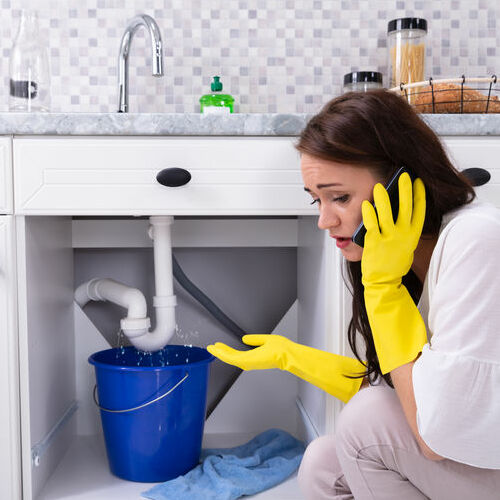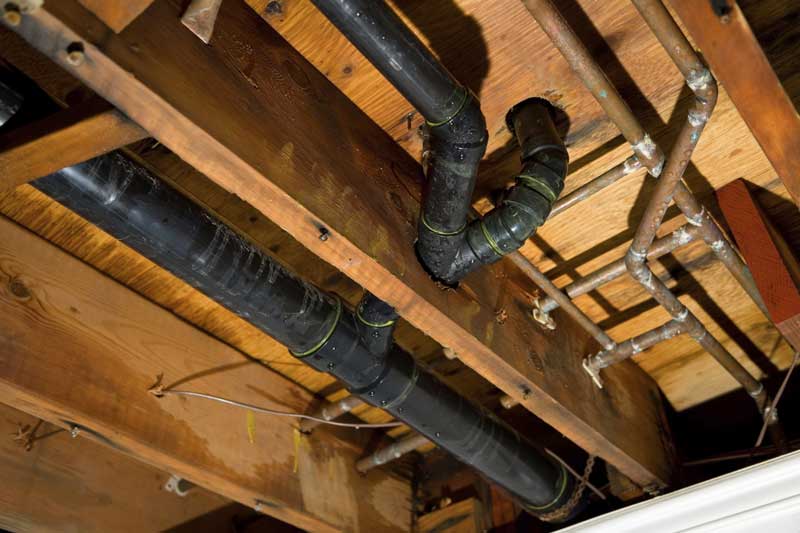A Homeowner’s Guide to Plumbing Issues in Older Homes
A Homeowner’s Guide to Plumbing Issues in Older Homes
Blog Article
Just how do you actually feel when it comes to Common Plumbing Challenges In Old Buildings?

Older homes often come with beauty, character, and background, however they can additionally bring a host of plumbing concerns. Whether you're handling aging pipes, low tide pressure, or leakages, knowing exactly how to address these common issues is crucial to preserving a secure and practical home. In this overview, we'll explore the normal plumbing obstacles faced by older homes and supply practical services to keep your pipes in leading form.
Comprehending Common Plumbing Concerns
Aging Pipes
Among one of the most common problems in older homes is maturing pipes. Depending upon the period in which your home was constructed, the pipelines might be made from materials that have actually worn away in time, such as galvanized steel, cast iron, and even lead. These products can rust, come to be brittle, or develop leaks, causing water damages and potential health hazards.
Water Top Quality Testing
Older pipes can impact the top quality of your water. Conduct a water top quality test to check for pollutants such as lead, corrosion, or various other contaminations that might be introduced by aging pipes.
Solutions for Typical Pipes Concerns
Changing Aging Pipelines
If your home has old, wearing away pipelines, take into consideration changing them with modern products like copper or PEX. This can be a substantial investment, yet it will certainly avoid future problems and enhance the safety and security and integrity of your pipes system.
Fixing Low Water Pressure
To take care of low tide stress, beginning by cleaning or changing old components and getting rid of mineral build-up in the pipelines. If the trouble lingers, it might be needed to change areas of rusty pipelines.
Fixing and Changing Dripping Pipes
For little leakages, you can utilize pipe clamps or epoxy putty as a momentary repair. Nonetheless, it's ideal to replace leaking pipes entirely to avoid further damages.
Updating Components
Upgrading old fixtures to modern, water-efficient models can boost your home's pipes performance and decrease water intake. Try to find components with the WaterSense label for the best performance.
Managing Pipeline Rust
If your pipelines are corroded, replacing them with corrosion-resistant products like copper, PVC, or PEX is the very best service. Regular examinations and water quality upkeep can assist avoid further deterioration.
Low Tide Stress
If you're experiencing low tide stress, maybe as a result of natural resources, deterioration inside the pipelines, or old components that are no longer functioning successfully. This can be a significant hassle, especially in locations like showers and sinks.
Dripping Pipelines
Leaks are an additional regular concern in older homes, commonly caused by rusty or worn-out pipes. Even little leakages can result in significant water damages, mold development, and increased water costs otherwise dealt with promptly.
Obsolete Fixtures
Obsolete plumbing fixtures such as faucets, commodes, and showerheads not just look old but may likewise be less reliable, susceptible to leaks, or inappropriate with contemporary plumbing standards.
Pipeline Corrosion
Rust is a common issue in older pipes, especially those made from galvanized steel or cast iron. Rusty pipes can limit water flow, trigger discoloration, and ultimately bring about leaks or pipe bursts.
Analyzing the Condition of Your Pipes
Inspecting Noticeable Pipelines
Begin by inspecting any type of noticeable pipes in your home, such as those in basements, crawl spaces, or under sinks. Look for indications of corrosion, leakages, or corrosion, which can indicate underlying problems.
Looking for Leaks
Look for leakages by evaluating areas around faucets, bathrooms, and under sinks. You can additionally check your water meter before and after a period of no water make use of to detect concealed leakages.
When to Call a Specialist
While some plumbing issues can be managed with do it yourself solutions, there are times when it's best to employ a specialist. If you're dealing with major leaks, substantial deterioration, or are unsure about the condition of your pipes, an accredited plumbing professional can provide professional evaluation and fixing.
Preventive Upkeep Tips
Normal Examinations
Routinely examine your plumbing system for signs of deterioration. Capturing problems early can stop expensive repair services down the line.
Water Stress Guideline
Guarantee your water stress is within the advised array to stay clear of worrying your pipelines and fixtures. A plumbing technician can set up a stress regulator if required.
Water High Quality Maintenance
Install water filters or conditioners if your water high quality is poor. This can safeguard your pipes and fixtures from damage triggered by difficult water or pollutants.
Positive Pipe Replacement
If your home has very old pipelines, consider aggressive replacement prior to significant problems develop. This can save you from emergency repair work and water damage.
Conclusion
Dealing with pipes problems in older homes needs a combination of alertness, preventative upkeep, and timely upgrades. By understanding the usual obstacles and understanding when to seek expert help, you can ensure your pipes system stays functional and dependable for years to come.
Common Plumbing Issues in Older Homes and How to Fix Them
Owning an older home in Australia comes with its unique charm and a set of challenges, especially when it comes to plumbing. The Sunshine Coast has many older properties that can harbour plumbing problems that aren t just inconvenient but potentially costly. Here s a look at some common plumbing issues in older homes and expert advice on how to handle them.
Outdated Piping Materials
Many older homes were built with galvanised steel, cast iron, or even lead pipes, materials that are far from ideal by today s standards. Galvanised pipes are prone to corrosion and clogging, while lead pipes pose serious health risks.
How to Fix:
Replacing old pipes is a job for a professional. Upgrading to copper or PVC piping not only enhances water quality and flow but also increases the property s safety and value. If you suspect your home has outdated materials, a licensed plumber can conduct a thorough inspection and recommend the best course of action.
Corrosion and Pipe Degradation
Over time, exposure to water and minerals can cause pipes to corrode, leading to leaks, bursts, and water contamination. Corrosion is especially common in homes over 50 years old.
How to Fix:
Regular inspections can catch early signs of corrosion. If corrosion is found, the affected section of piping often needs to be replaced. For homes with extensive corrosion, a complete plumbing overhaul might be necessary. It s crucial to consult with a plumbing expert to understand the extent of the issue.
Tree Root Intrusion
Older neighbourhoods usually have mature trees whose roots can intrude into pipe lines, causing blockages or damage. This is particularly problematic for sewer lines, where roots seek out water sources.
How to Fix:
A plumber can use a specialised camera to inspect sewer lines for root intrusion. If roots are a problem, methods like root cutting or hydro-jetting can clear the obstruction. In severe cases, part of the pipe may need replacing. Consider root barriers around the piping to prevent future issues.
Inadequate Water Pressure
Low water pressure in older homes can be due to various factors, including corroded water lines, sediment build-up in pipes, or outdated fixtures.
How to Fix:
First, check if the low pressure is isolated to one area or throughout the house. Replacing old fixtures can sometimes resolve the issue. However, if the problem is more widespread, it might be due to sediment or corrosion. Flushing the system or replacing the affected pipes usually restores normal pressure. Again, a professional assessment is advisable.
Outdated Fixtures
Older homes often feature fixtures that are not only visually dated but functionally inefficient. This includes everything from toilets and taps to showerheads and washing machine hoses.
How to Fix:
Updating these fixtures can improve both water efficiency and the aesthetic appeal of your home. Modern fixtures are designed to conserve water, which can significantly reduce your water bill and lessen your environmental impact.
Conclusion
Maintaining the plumbing in an older home requires a proactive approach. Regular checks and updates are key to preserving these beautiful properties. If you re facing plumbing issues in your older home, it s best to call on experienced professionals like Green & Gold Plumbing & Gas. With the right expertise, even the most daunting plumbing problems can be resolved, ensuring that your home s character is maintained while its functionality is enhanced.
https://gandgplumbing.com.au/common-plumbing-issues-in-older-homes-and-how-to-fix-them/

Do you like more info about Plumbing Problems In Old Homes? Make a remark down the page. We will be pleased to hear your opinions about this write up. We are looking forward that you come back again before long. In case you liked our blog posting if you please consider to pass it around. Kudos for being here. Please pay a visit to our site back soon.
Call Today Report this page